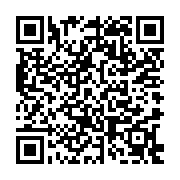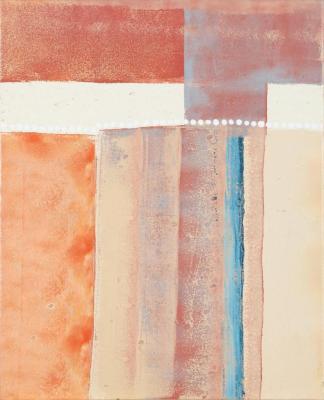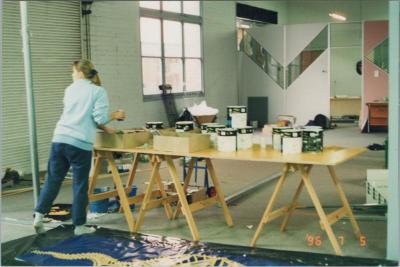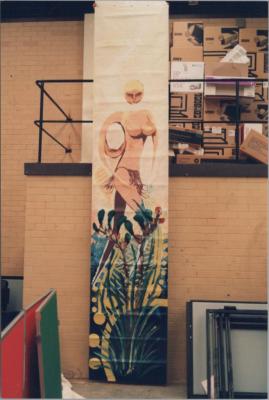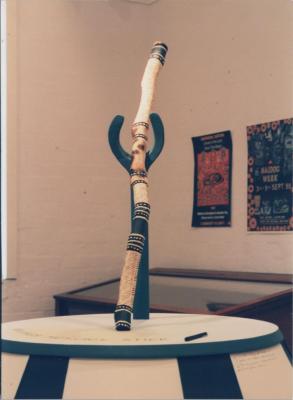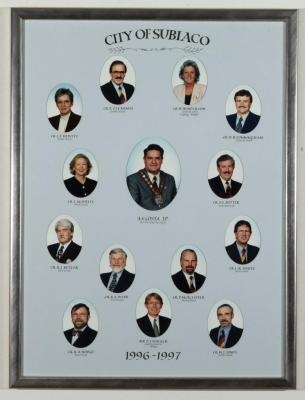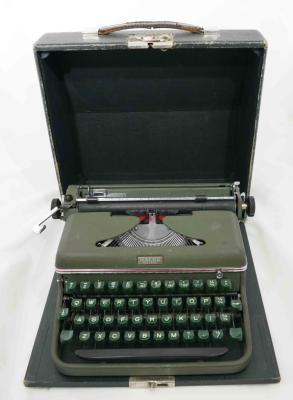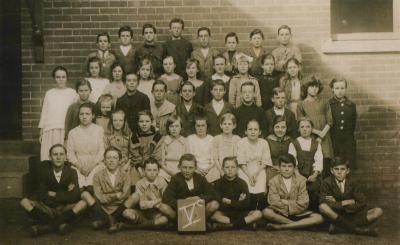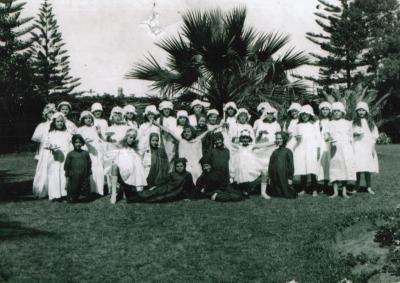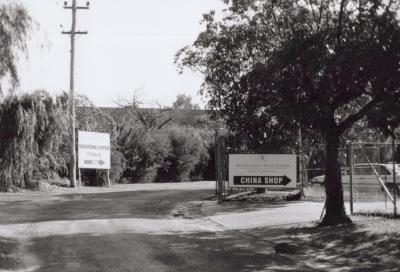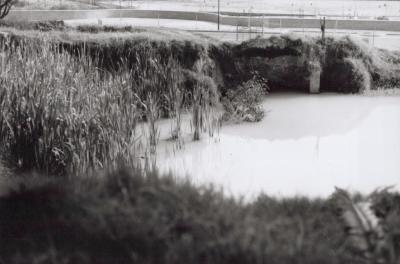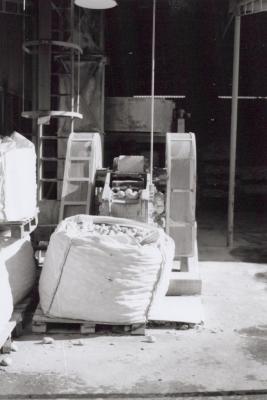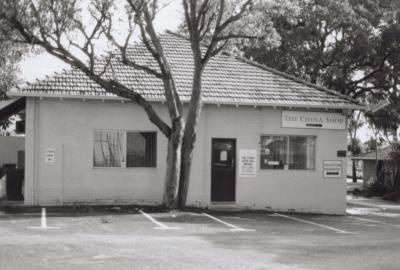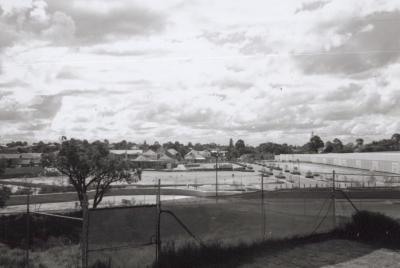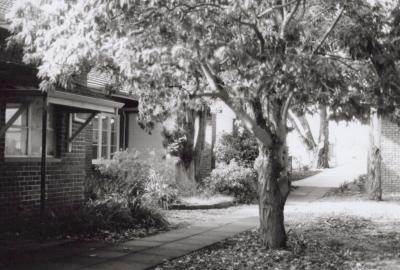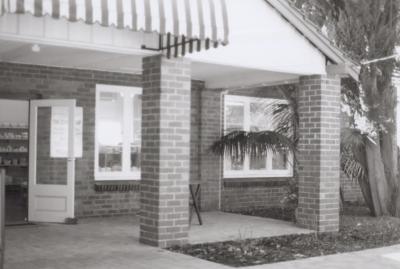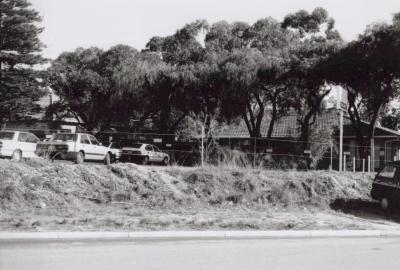SCULPTURE: 'INTERPRETATION OF A NOONGAR MESSAGE STICK', SHANE PICKETT
1996Symbolic Aboriginal message stick in the form of a section of painted tree branch. Pickett explained that the authentic message stick contained knowledge about, and power over, the local area.
This message stick is a symbolic interpretation of that power, and the physical and spiritual Noongar world. The diagonal lines represent bulrushes and the artesian water sources controlled by the Wagyl. The dot areas represent water holes and the bare area in the centre represents a burial place. The top of the message stick represents the men’s area of King’s Park, a particularly sacred part of what is now the metropolitan area.
'Symbolic Interpretation of a Noongar Message Stick' was originally displayed on a painted drum, also designed by Pickett. Around the drum were placed pieces of archival paper, upon which visitors were invited to write their thoughts about colonisation and reconciliation. Many of these pages were accessioned into the museum collection, as a permanent record of museum visitor’s responses to the artwork, and to issues surrounding reconciliation more generally.
In 1996 local Noongar artist Shane Pickett was commissioned by the Subiaco Museum to produce a number of works as part of its commitment to Reconciliation, a stand consistent with the principles of the New Museology.
This work, ‘Symbolic Interpretation of a Noongar Message Stick’, takes the form of a painted section of tree branch which was originally displayed on a painted drum, also designed by Pickett. Around the drum were placed pieces of archival paper, upon which visitors were invited to write their thoughts about colonisation and reconciliation. Many of these pages were accessioned into the museum collection, as a permanent record of museum visitor’s responses to the artwork, and to issues surrounding reconciliation more generally.
‘Symbolic Interpretation of a Noongar Message Stick’ was first displayed in the ‘Noongar Room’ at the Subiaco Museum, a gallery space which focused on Aboriginal history in Subiaco. This room was opened in July 1996 as part of the museum’s ongoing commitment to the reconciliation movement. The Museum had not previously acknowledged a History of Colonisation and dispossession, and doing so caused considerable disquiet, e.g. see comments in the Visitors' Book, August-September 1996 (See also Jennifer Garton-Smith (now Harris), ‘Unlocking Museums, proceedings of the Darwin National Conference of Museums Australia’, 1997). This work remained on display in the museum until 2021 when it was removed from display due to conservation concerns.
'Commissioned by the City of Subiaco to convey the message of reconcilliation in the City's centenary year of local government. The installation invited visitors to convey their thoughts and imporessions.' From interp found in TG.
Details
Details
Shane Pickett
This artwork has high significance to the Subiaco Museum's collection, not only as the work of a celebrated local Noongar artist, but also as a physical representation of the reconciliation commitment steps taken by the City of Subiaco, and the museum, during the 1990s.
Aesthetic: Historic: Social: Condition: Interpretive: Provenance: Rarity: Representativeness:
More items like this
Other items from Subiaco Museum
- PHOTOGRAPH (FRAMED): CITY OF SUBIACO COUNCIL PHOTOS 1996-1997
- TYPEWRITER: 'HALDA'
- PHOTOGRAPH: SUBIACO PRIMARY SCHOOL CHILDREN, GRADE V, CIRCA 1914
- PHOTOGRAPH: SUBIACO PRIMARY SCHOOL GIRLS IN SUBIACO GARDENS
- PHOTOGRAPH: ENTRANCE TO AUSTRALIAN FINE CHINA, SUBIACO
- PHOTOGRAPH: WASTE POND OF AUSTRALIAN FINE CHINA
- PHOTOGRAPH: GRINDING MACHINE, AUSTRALIAN FINE CHINA
- PHOTOGRAPH: MANAGER'S HOUSE, AUSTRALIAN FINE CHINA
- PHOTOGRAPH: VIEW OVER SUBI CENTRO
- PHOTOGRAPH: DESIGN SHOP OF AUSTRALIAN FINE CHINA
- PHOTOGRAPH: SHOWROOM OF AUSTRALIAN FINE CHINA
- PHOTOGRAPH: CAR PARK OF AUSTRALIAN FINE CHINA
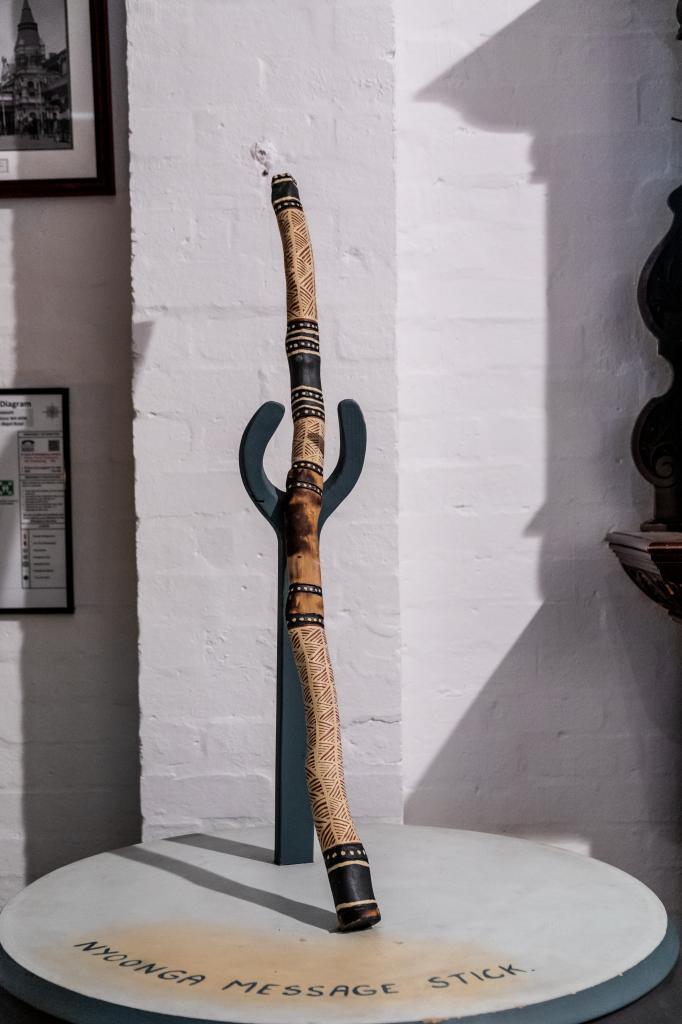
Scan this QR code to open this page on your phone ->
